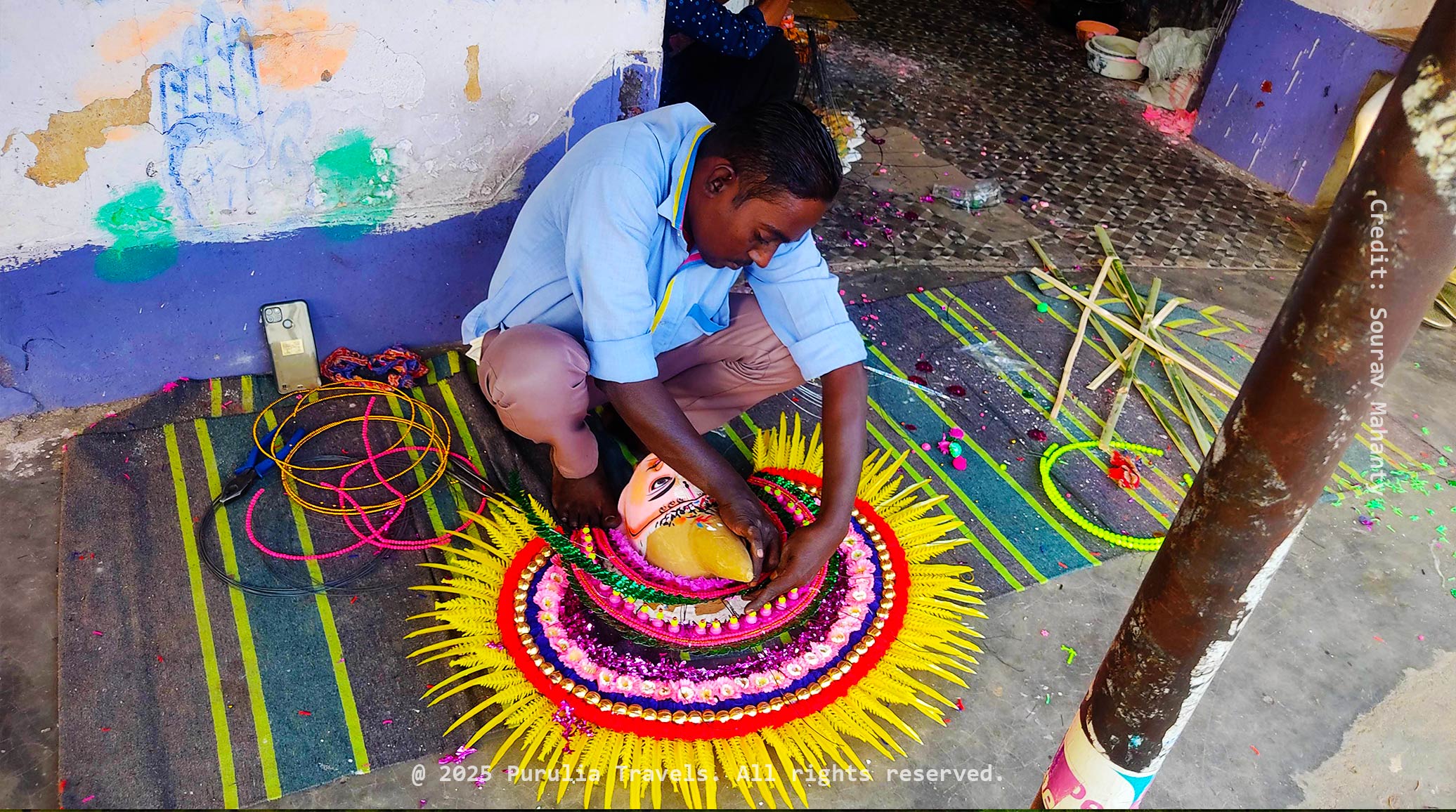
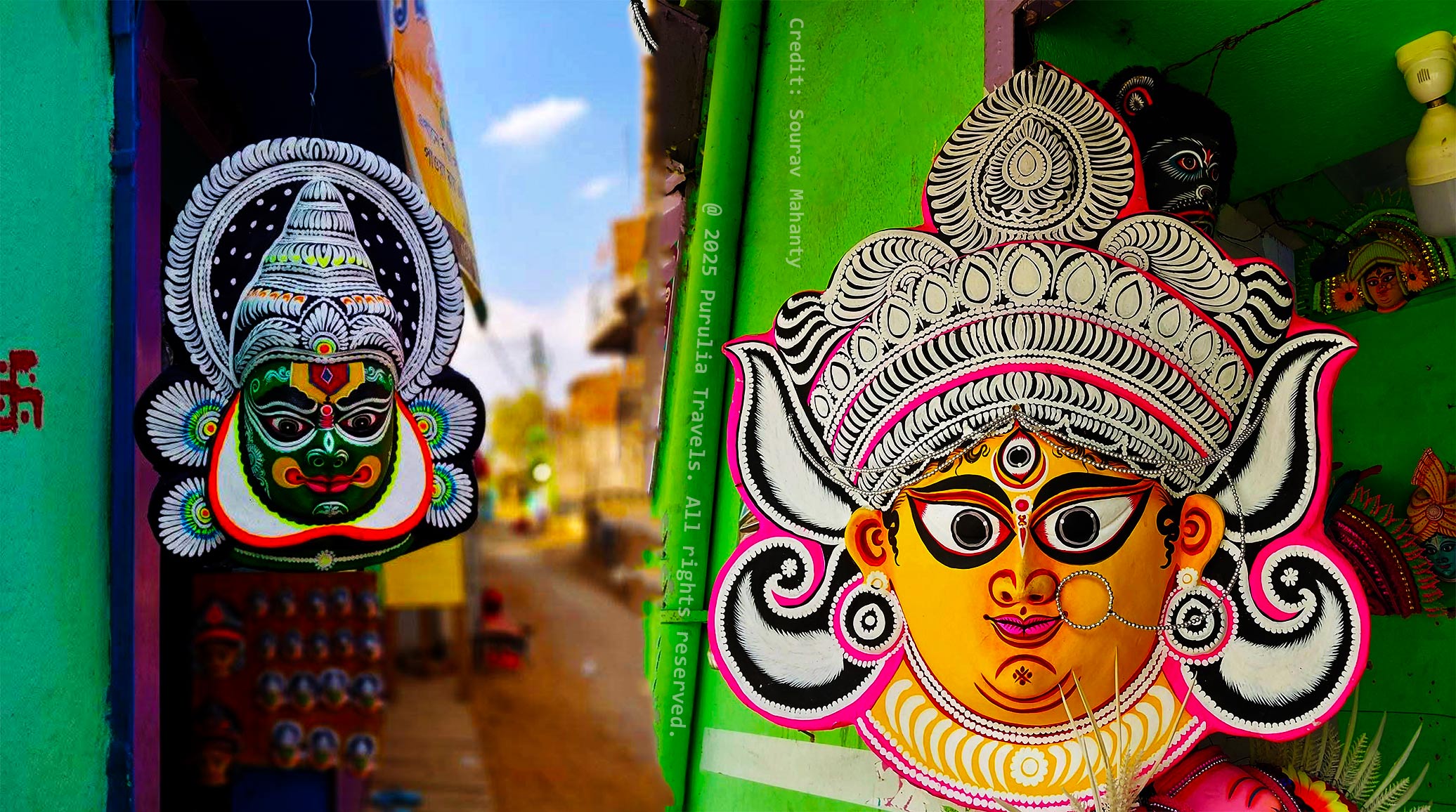
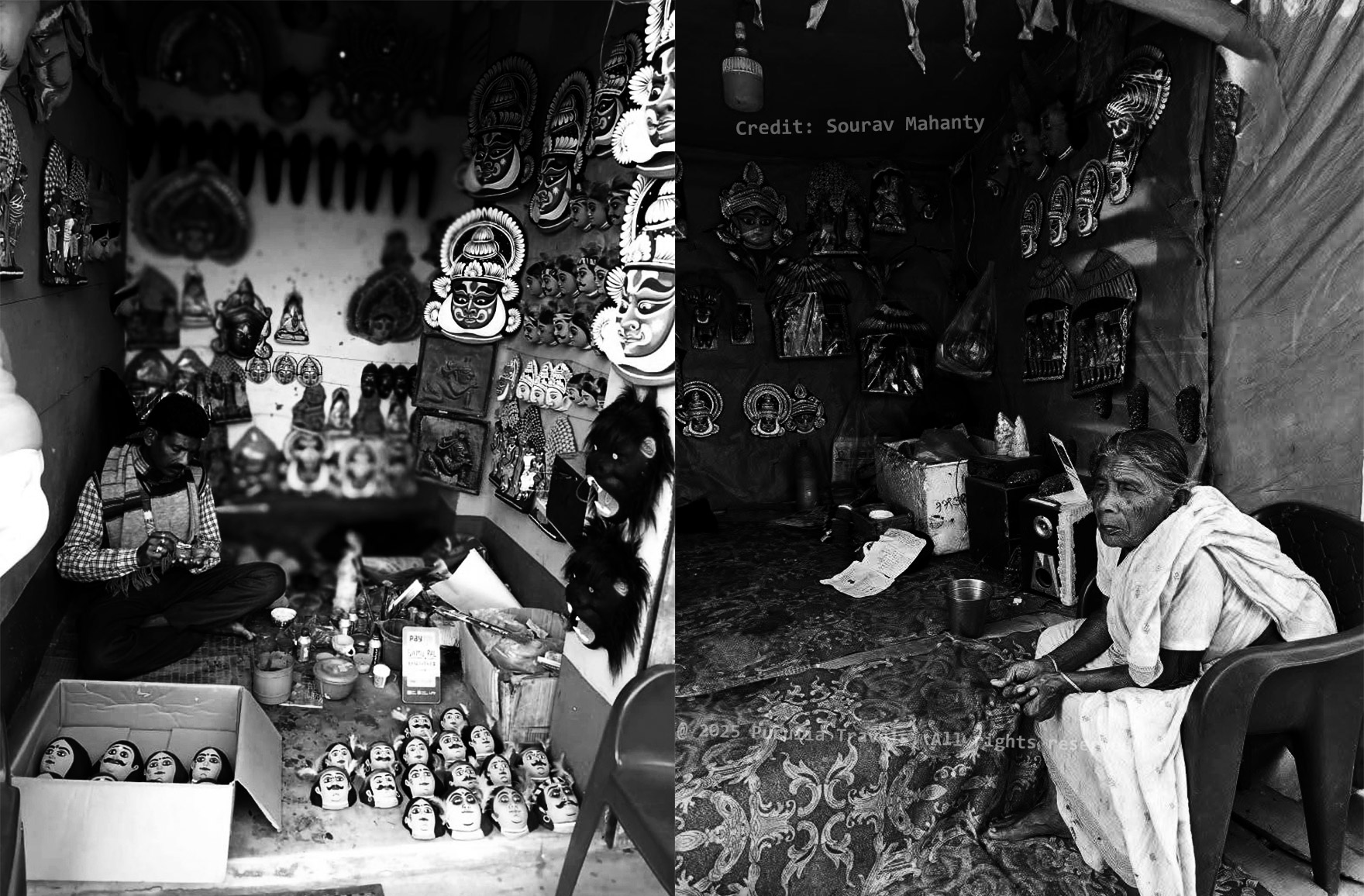
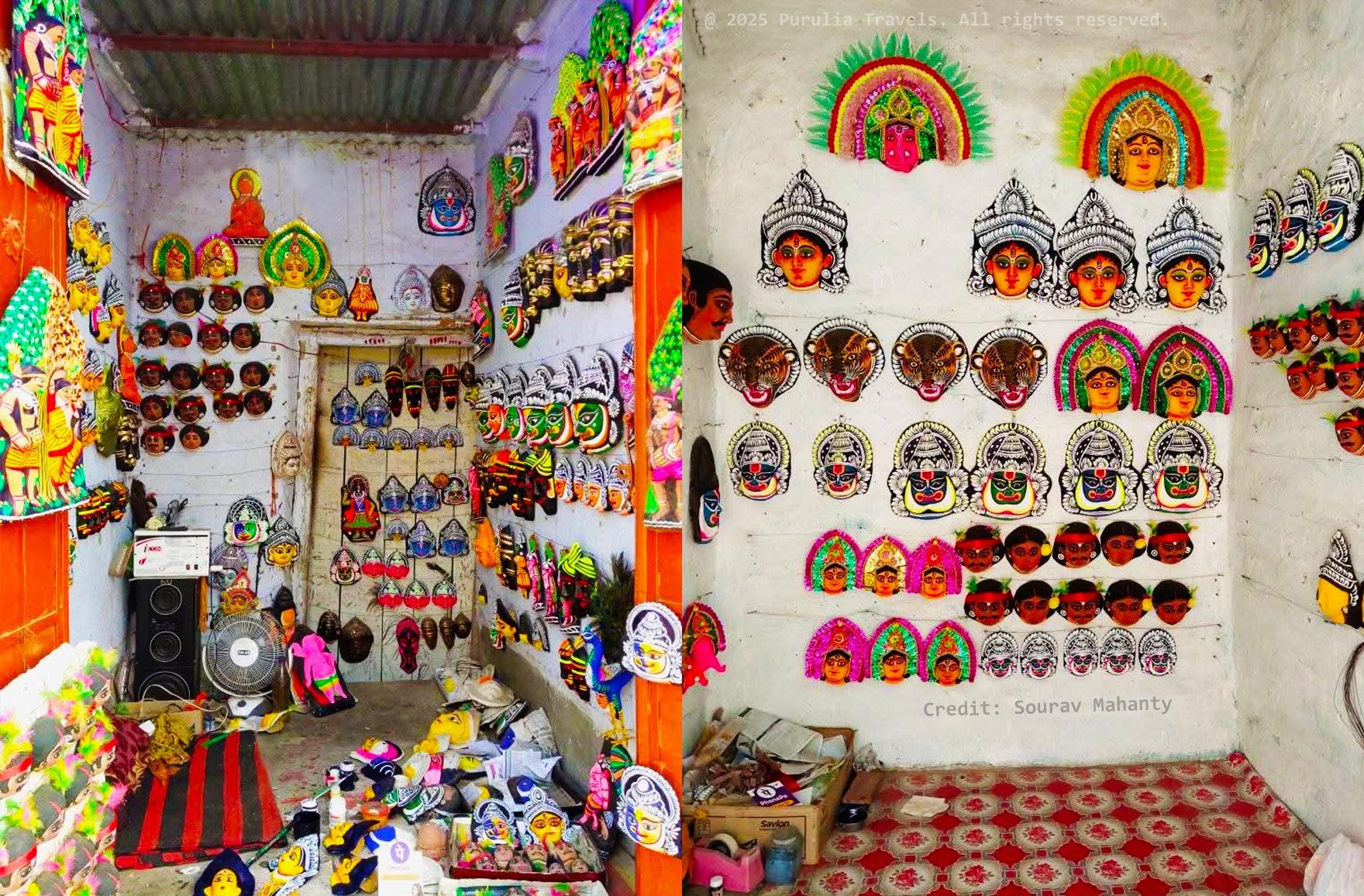
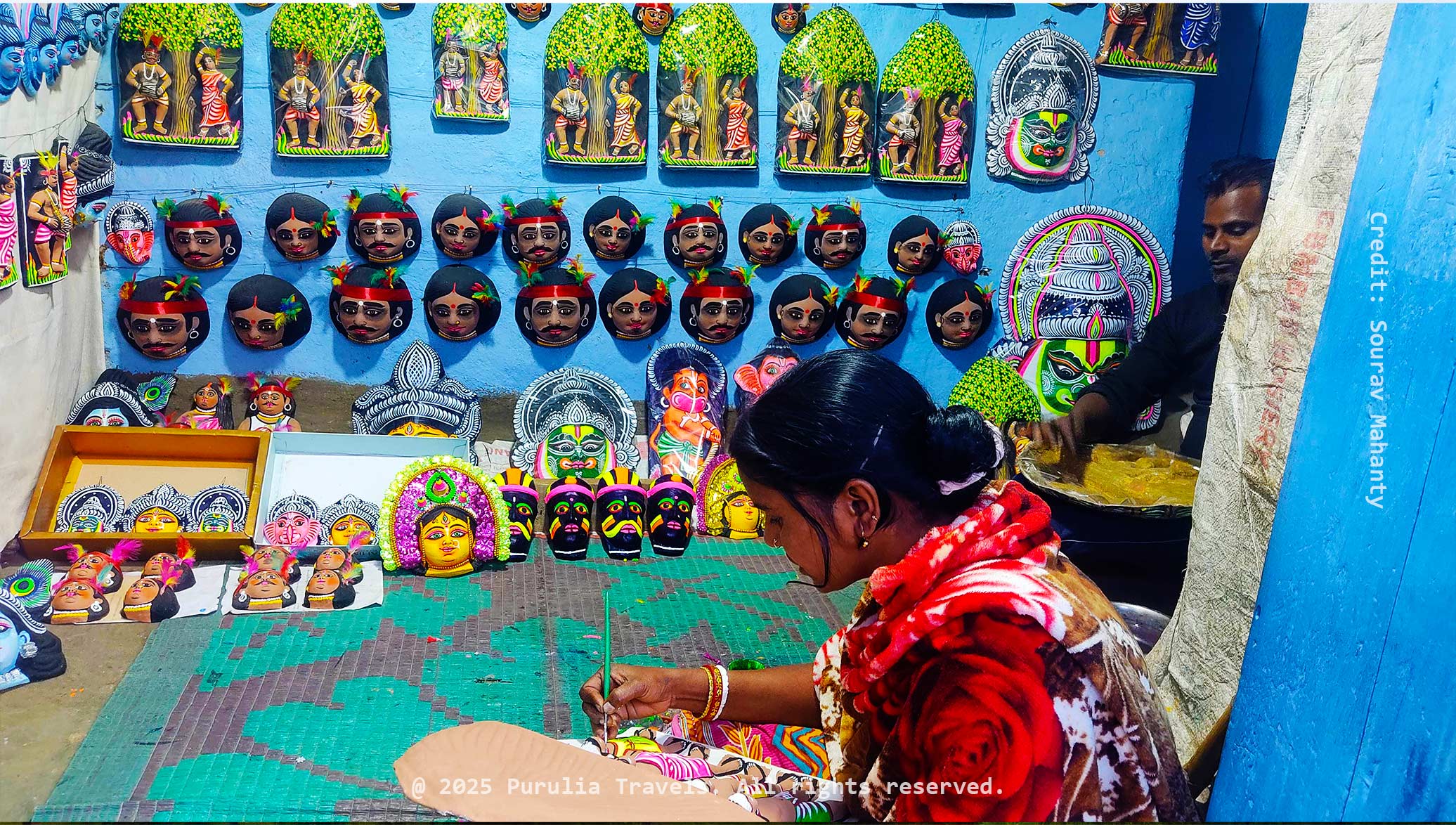
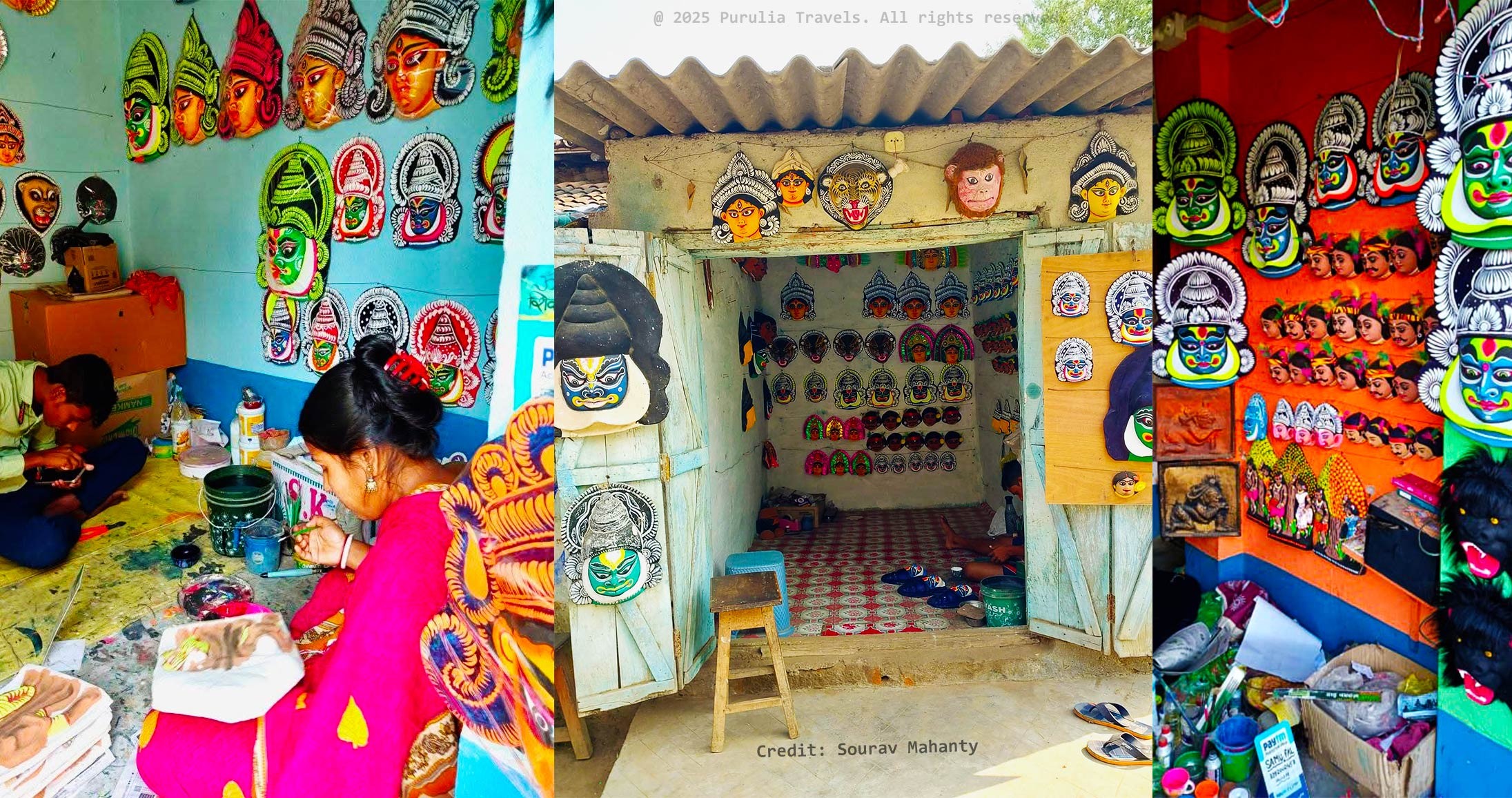
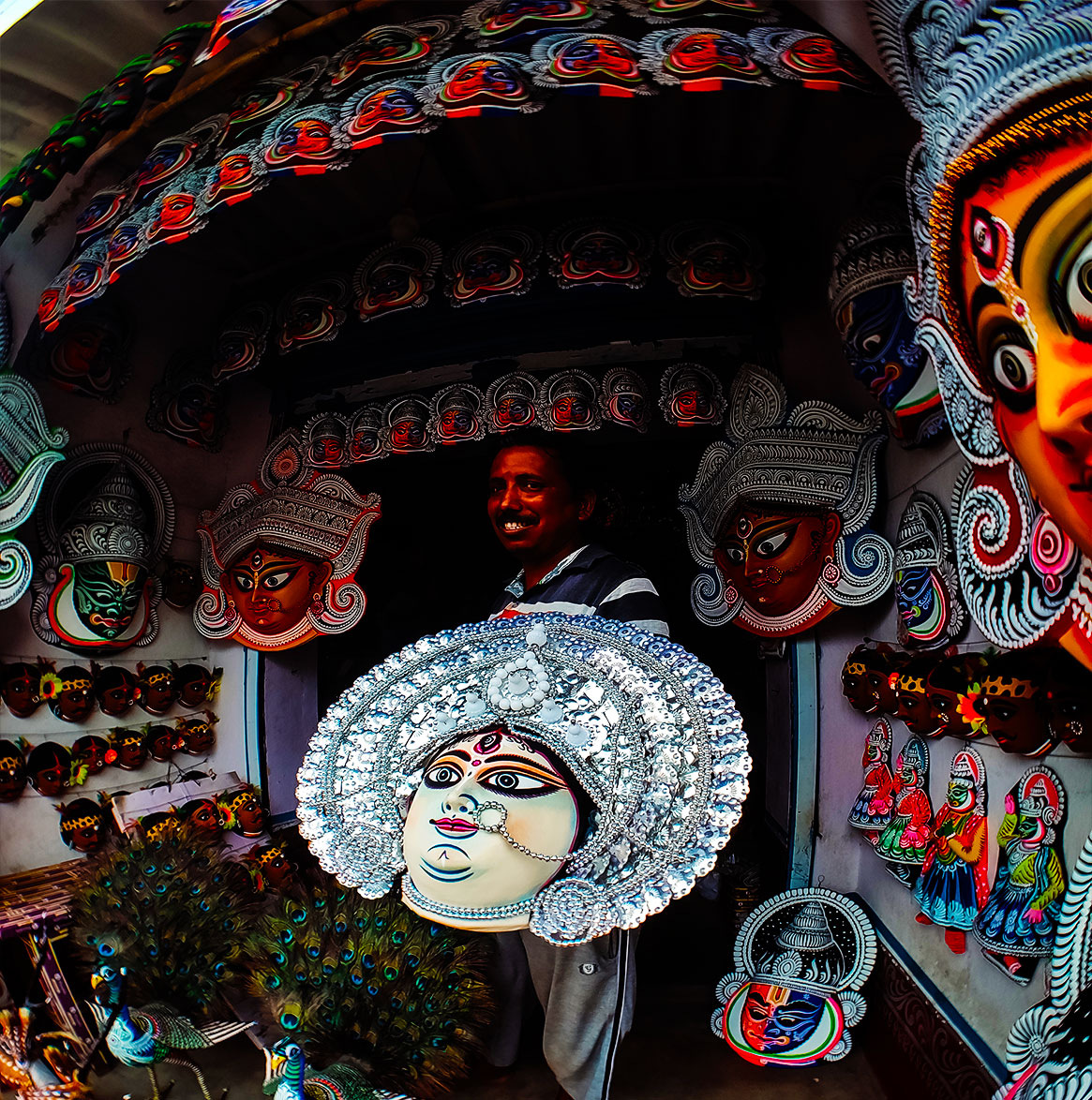
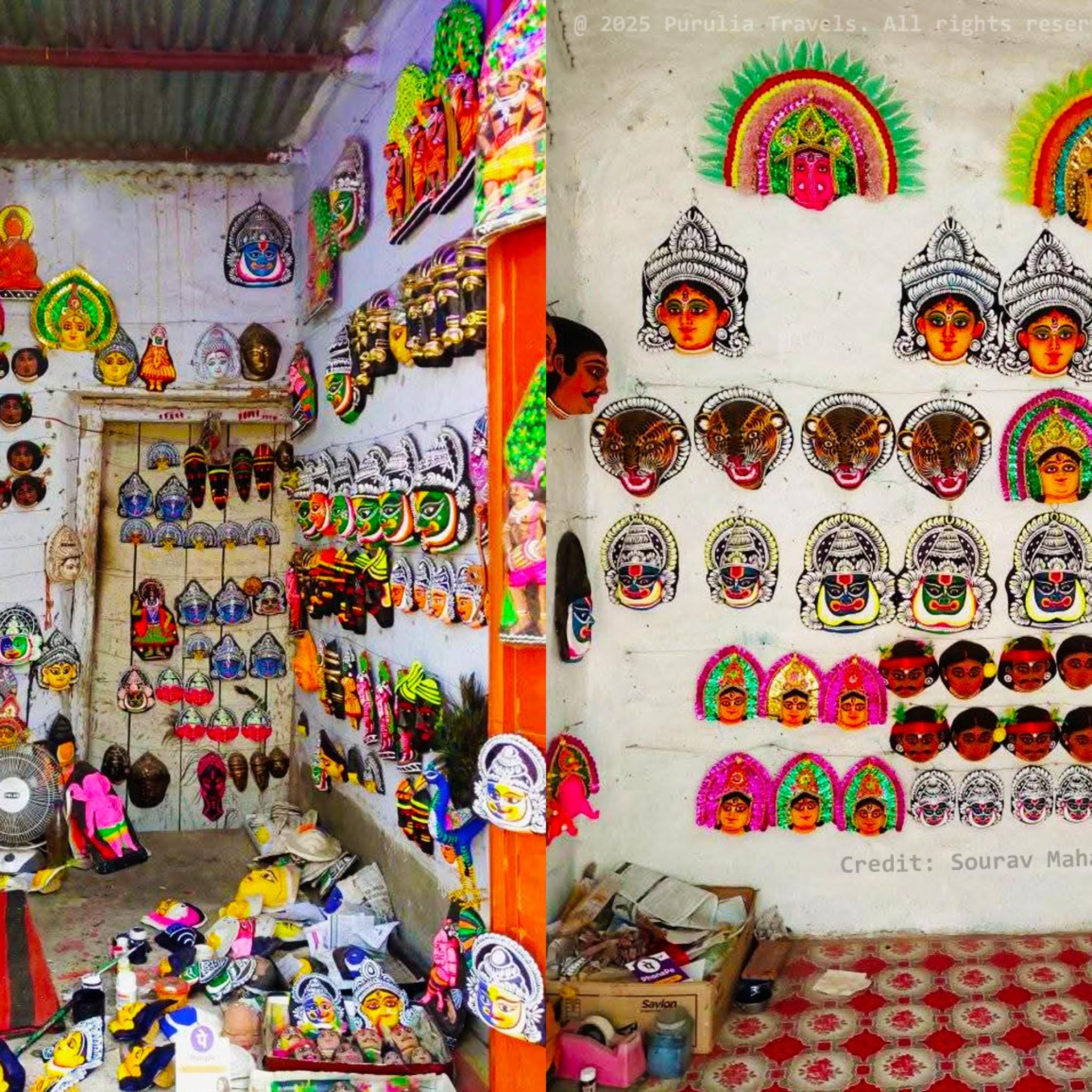
Charida, or Mukhosh Gram or Chau Mask Village (in Bengali), is a fantastic off-the-beaten-path destination in the Baghmundi block in the Purulia district of West Bengal. Charida is famous for its Chau mask-making tradition that has persisted for hundreds of years. Visitors to Charida will be amazed by its defining art and cultural heritage, especially the masks made by Charida’s artisans, which are integral to Purulia Chau Dance – a folk theatrical performance that involves combat, storytelling, and a dance aspect.
The Chau masks typically depict gods, goddesses and mythical beings and are beautifully crafted with heritage that has been passed down through generations of skill and artistry. A visit to Charida will provide you with a close look at a remarkable local treasure.
Chau mask-making history initially draws from local tribal tradition, where the dance was done more as a ritualistic act of expression. Chau Dance is based on vibrant movement, martial arts, and very stylized storytelling. It used to be done without masks. Chau Dance received royal sponsorship during the 19th century, specifically when King Madan Mohan Singh Deo of Baghmundi, who recognized the art form’s potential, called on some Sutradhar families from the area and asked them to make expressive character masks so they could properly perform the dance.
This partnership was a critical juncture in the history of Chau mask-making because the moment the masks became part of the dance, it changed the constitution of Chau as a theatrical visual performance. Masks modified over the years, embodying the gods, goddesses, and even mythic characters. Each investment of skill and capital in the mask and their multiple stylistic features contributed to the cultural and spiritual investment in the Chau and the region it exists. Today, these masks are no longer just in pursuit of the aesthetic or art; they have acquired essential symbolism as the cultural heritage of Charida and the surrounding region. The masks still continue to be important to Chau Dance performances.(1) (2)
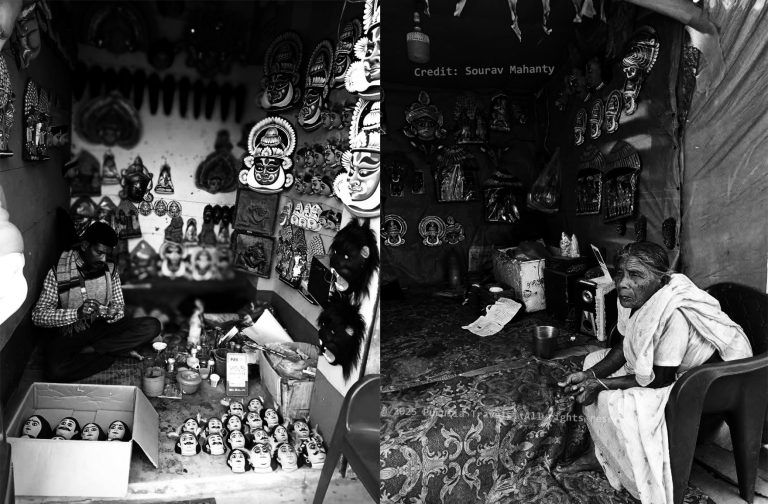
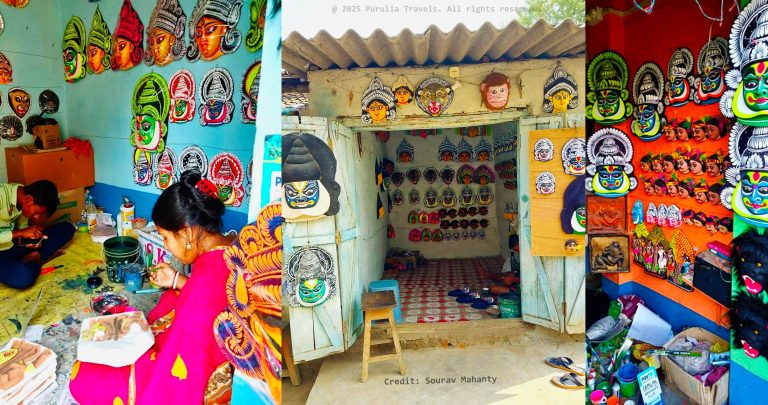
Charida Village supports nearly 300 family Chau mask makers. The art of Chau mask making began with the Sutradhar community, but as the profession began to be recognized globally, craftsmen from the Sutradhar community and other communities sought to work as Chau mask makers, rather than other occupations, now ensuring that this craft will live on. The accomplished artisans from Charida use the ancient techniques still today to make oversized masks either from locally sourced materials from clay, paper and other natural resources. The masks are shaped and painted into representations of gods, goddesses, and characters from legends. Each mask crafted in Charida is a unique part of the global program for sustaining and preservation of this cultural art form in its infancy stage.
Purulia Chau masks come in a wide range of themes, each with its own cultural and symbolic significance. Each type of mask plays a crucial role in the storytelling of the Chau Dance, adding layers of meaning and drama to the performance. Some of the most common types include:
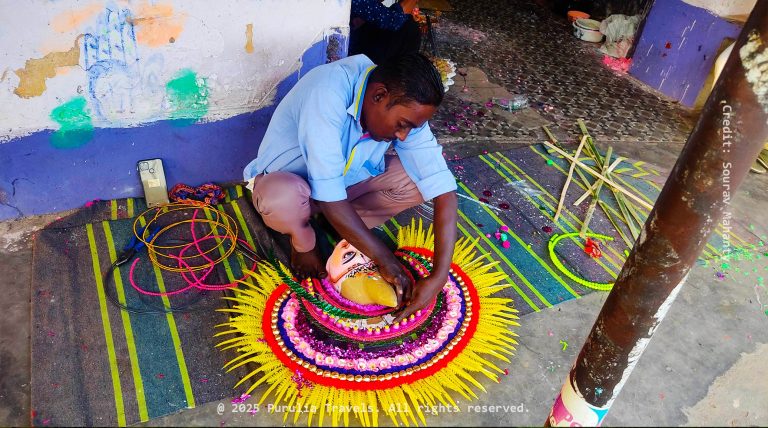
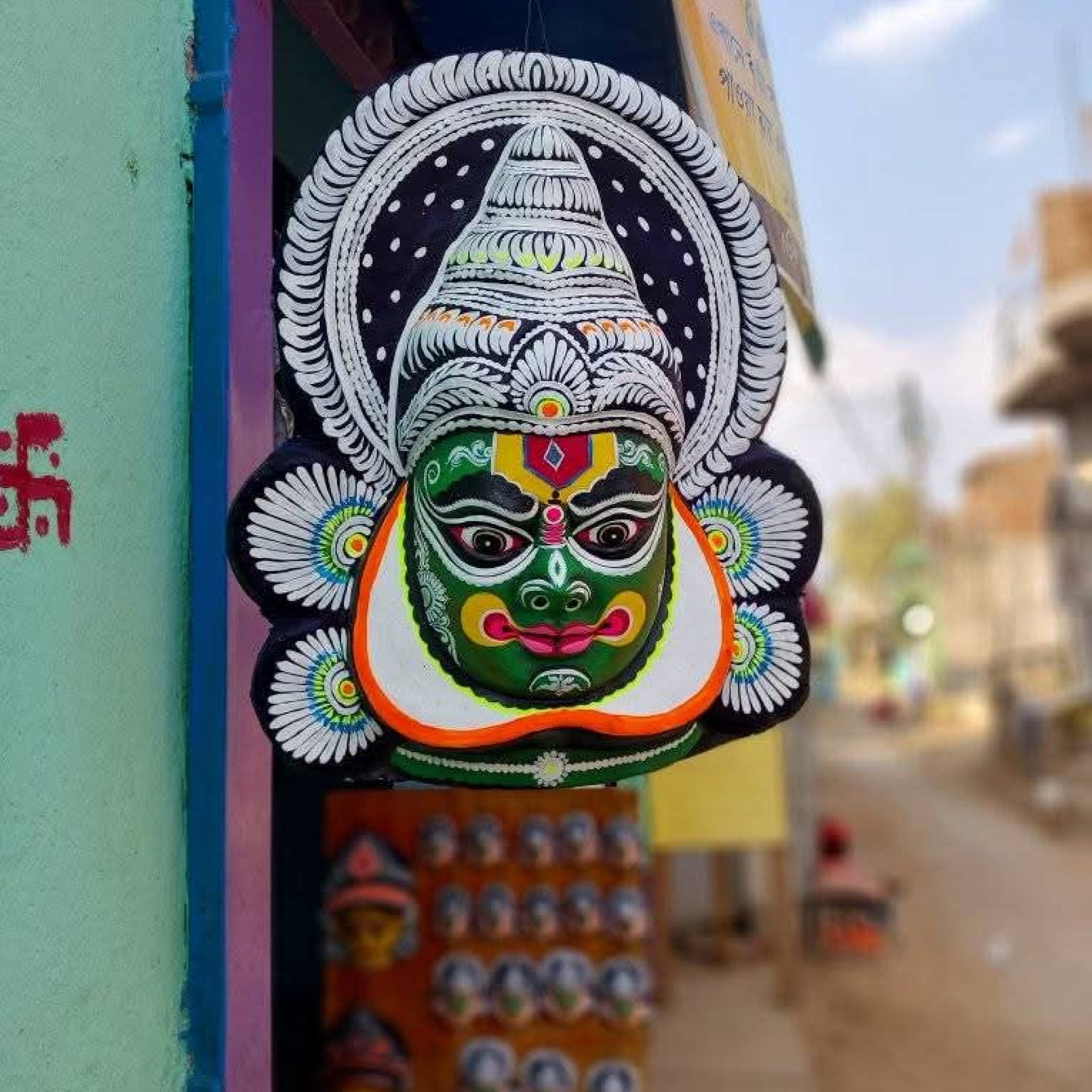

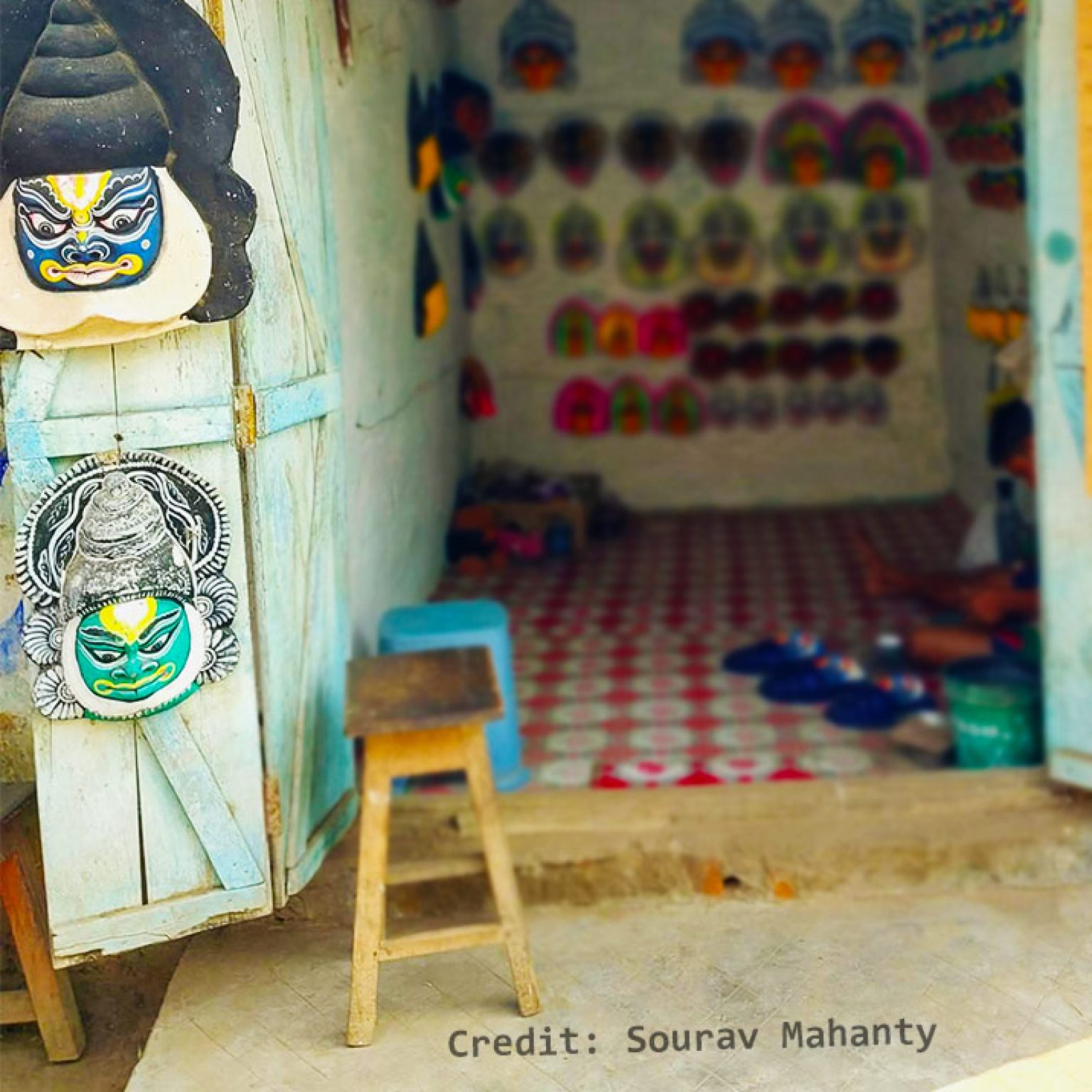


Situated just a short distance inside Charida Village, the Folk Art Centre serves as a lively cultural epicentre for the study, preservation and promotion of the art of Chau mask-making. The centre shows a broad range of Chau masks and introduces the visitor to the art-form’s historic background and detailed process. It displays some rare and unique Chau masks that demonstrate the remarkable workmanship and creativity of Charida’s daily life participants.
The Folk Art Centre, which is run by a local cooperative of mask-making artisans, provides an authentic and engaging experience for anyone interested in learning about the cultural significance of Chau masks. Visitors are able to not only see the craftsmanship in action but to also buy masks and take a piece of Charida’s artistic legacy with them. Finally, this centre offers a unique, behind-the-scenes feel to the collective’s work and the ongoing operations of the village in the pursuit to preserve a traditional practice that spans centuries.
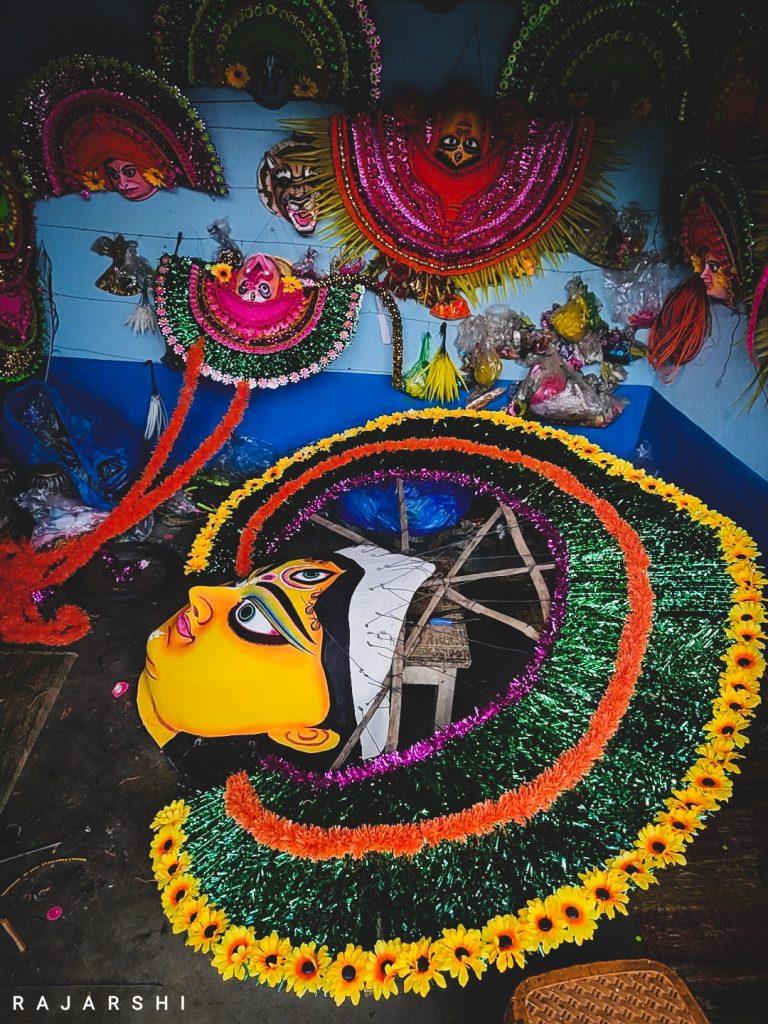

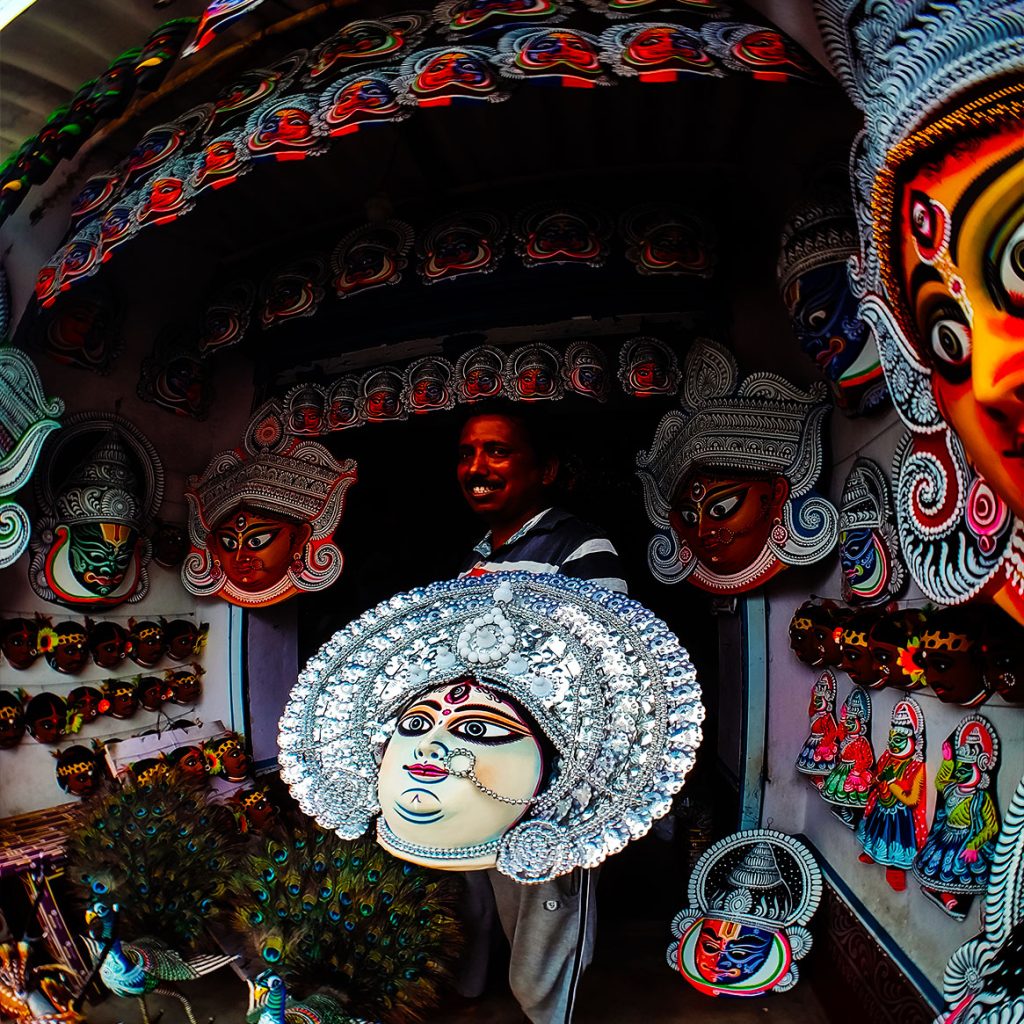
If you plan to come to Charida Village, Chau masks are the most popular and unique souvenirs to purchase, and they are designed differently by each artist. Chau masks come in different sizes and representations that exhibit the richness of the village. Depending on size, complexity, and materials, Chau Masks can vary from ₹100 – ₹10000.
Some of the most sought-after masks include:
These masks are beautiful, but they are also culturally and religiously significant. Whether you are a collector, an art lover, or just looking for a very original souvenir, consider the Chau masks from Charida some of your most memorable and worthwhile purchases.
| Location Name | Details | Distance (Approx.) | Read More |
|---|---|---|---|
| Khairabera Dam | Khairabera Dam is a serene nature retreat in the Baghmundi Hills, ideal for trekking, kayaking, and peaceful lakeside escapes amid lush forests. | 13.2 km | Read More |
| Chemtaburu Hill | Chemtaburu Hill's view from the Khairabera Dam is amazing. Chemtaburu is the highest peak of the Ajodhya Hills range as well as South Bengal. It ranks 10th in West Bengal. | 12.7 km | Read More |
| Pakhi Pahar | Pakhi Pahar, located in the Ajodhya Hill range, is famous for its stunning rock art carvings of animals, vibrant natural beauty, and cultural experiences with local tour guides. | 15.3 km | Read More |
| Pardi Dam | Pardi Dam & Gorgaburu Hill offer a serene escape in the Ayodhya Hills, combining natural beauty, tribal culture, and adventure through trekking, rock climbing, and scenic views. | 24.6 km | Read More |
Purulia Railway Station, located about 322 km from Kolkata, is well-connected by trains such as the Ranchi Vande Bharat Express (20898), Chakradharpur Express (18011), Purulia SF Express (12827), and Ranchi Intercity Express (18627). From the station, a private vehicle arranged by Purulia Travels will take you along Ajodhya Hill Road or the Balarampur Road for almost 60–70 km to reach the Charida Village.
Purulia is well-connected by road to cities like Bankura, Asansol, Bokaro, Jamshedpur, and Ranchi. From Kolkata, you can take a government or private bus from Esplanade, including AC options. These buses will drop you at Purulia Bus Stand, from where you can hire a private vehicle from Purulia Travels that will take you along Ajodhya Hill Road or the Balarampur Road for almost 60–70 km to reach the Charida Village.
The nearest airport is Birsa Munda Airport in Ranchi, about 117 km away, followed by Kazi Nazrul Islam Airport in Durgapur, around 164 km away. From either airport, you can take a train or bus to reach Purulia Town. Once there, a private vehicle from Purulia Travels will take you along Ajodhya Hill Road or the Balarampur Road for almost 60–70 km to reach the Charida Village.
Find quick answers to all your questions about visiting Charida Village.
Charida Village is famous for its centuries-old tradition of Chau mask-making, which is integral to Purulia Chau Dance. The village is also known for its artisans who create these beautiful, larger-than-life masks.
You can reach Charida by road, train, or air. The nearest airport is Birsa Munda Airport (Ranchi), 87 km away. Purulia Railway Station is 67 km from Charida, and the village is well-connected by road to Kolkata (340 km).
The best time to visit is during the winter months (November to February), particularly during the Chhau Mask Festival held in December.
The 500-step descent can be challenging, especially the natural stone stairs. Trekking shoes are recommended.
There are no accommodations in Charida itself, but nearby areas like Baghmundi, Khairabera, and Ajodhya Hills offer excellent lodging options, including resorts and homestays.
Subscribe to see secret deals prices drop the moment you sign up!
WhatsApp us

